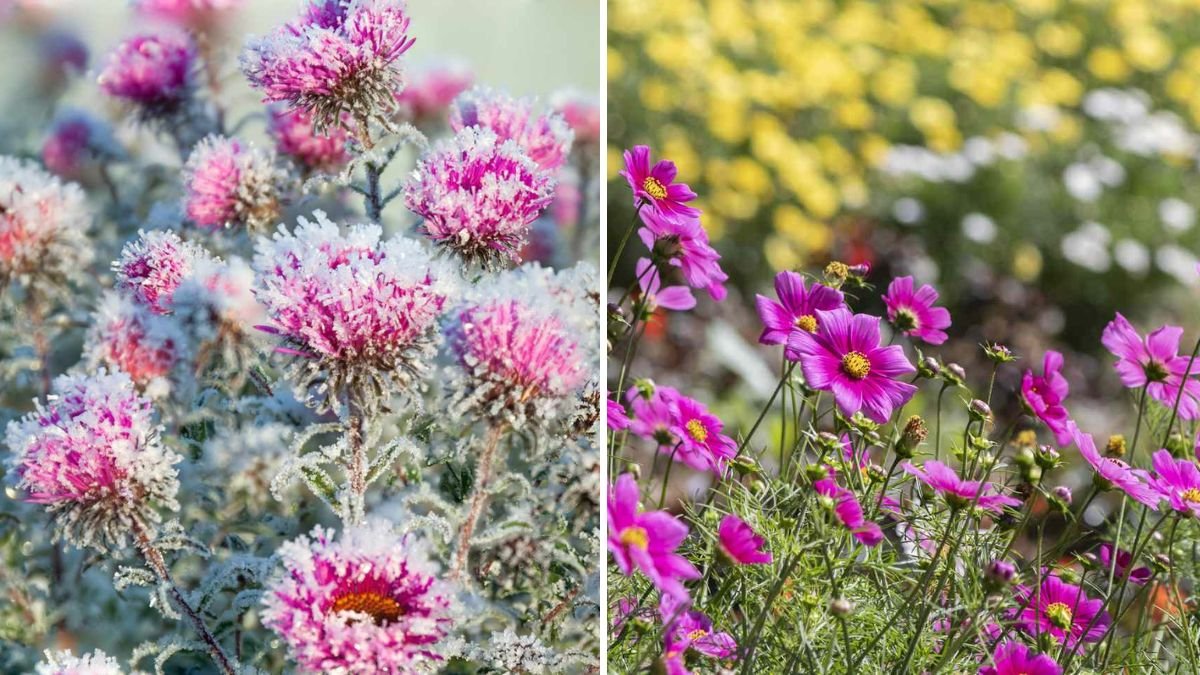A vibrant garden is a source of joy, providing color, fragrance, and a serene escape throughout the growing season. However, as summer fades into fall, many gardeners face the challenge of maintaining continuous blooms until the first frost. Early frost can quickly wither tender flowers, leaving beds bare and landscapes dull. The key to a garden that stays colorful and alive until frost lies in strategic planning, plant selection, and ongoing care.
This guide explores practical techniques to extend your garden’s blooming season, ensuring a flourishing display from spring through fall.
1. Choose Frost-Tolerant and Late-Blooming Plants
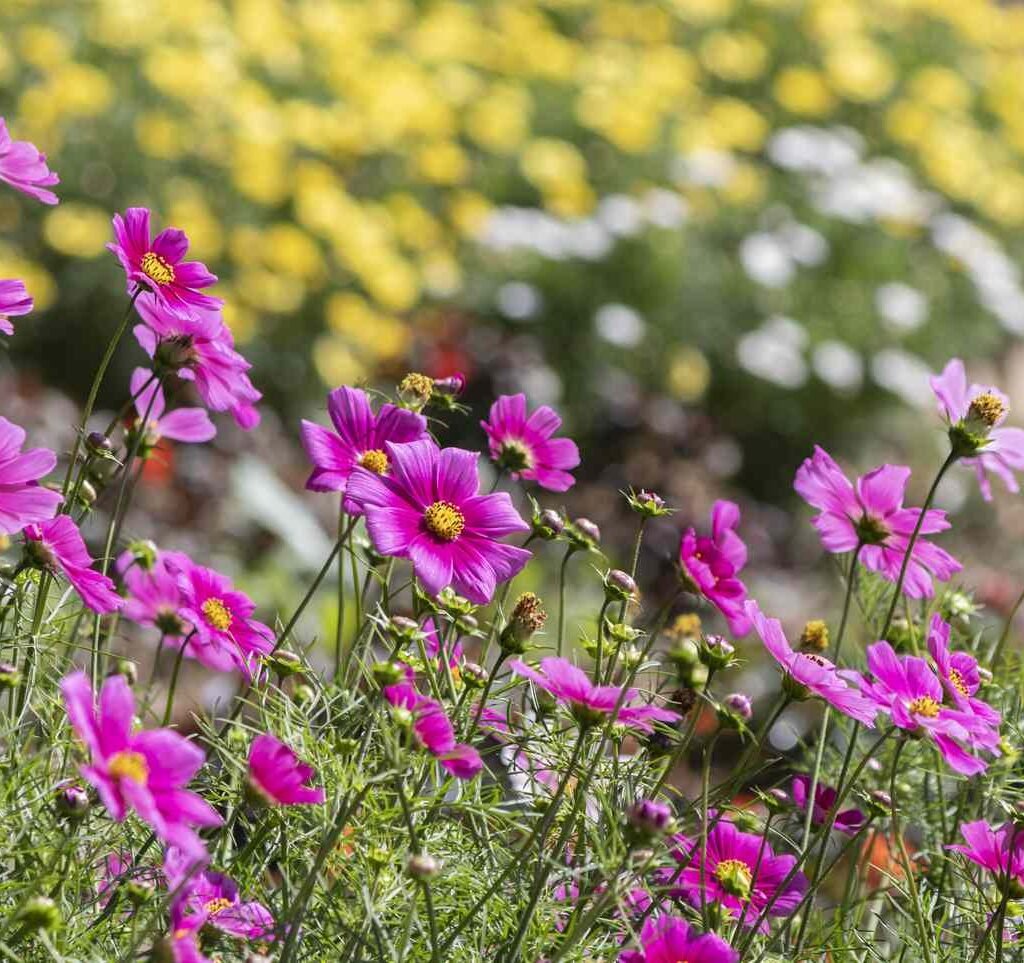
The foundation of a long-lasting garden begins with selecting the right plants. Not all flowers can withstand cooler temperatures, so focusing on frost-tolerant species and late bloomers is crucial.
Recommended Frost-Tolerant Annuals
- Pansies and Violas: Can survive light frosts and continue blooming in cool weather.
- Snapdragons: Adaptable and colorful, they thrive in cooler temperatures.
- Ornamental Kale and Cabbage: Offer vibrant foliage and are exceptionally frost-hardy.
Recommended Perennials
- Asters: Bloom late in the season with pink, purple, and white flowers.
- Chrysanthemums: Classic fall blooms that provide long-lasting color.
- Sedum (Stonecrop): Hardy succulent flowers that attract pollinators into fall.
Tip: Mix early, mid, and late bloomers in your garden beds to ensure continuous color from spring to frost.
2. Use Succession Planting
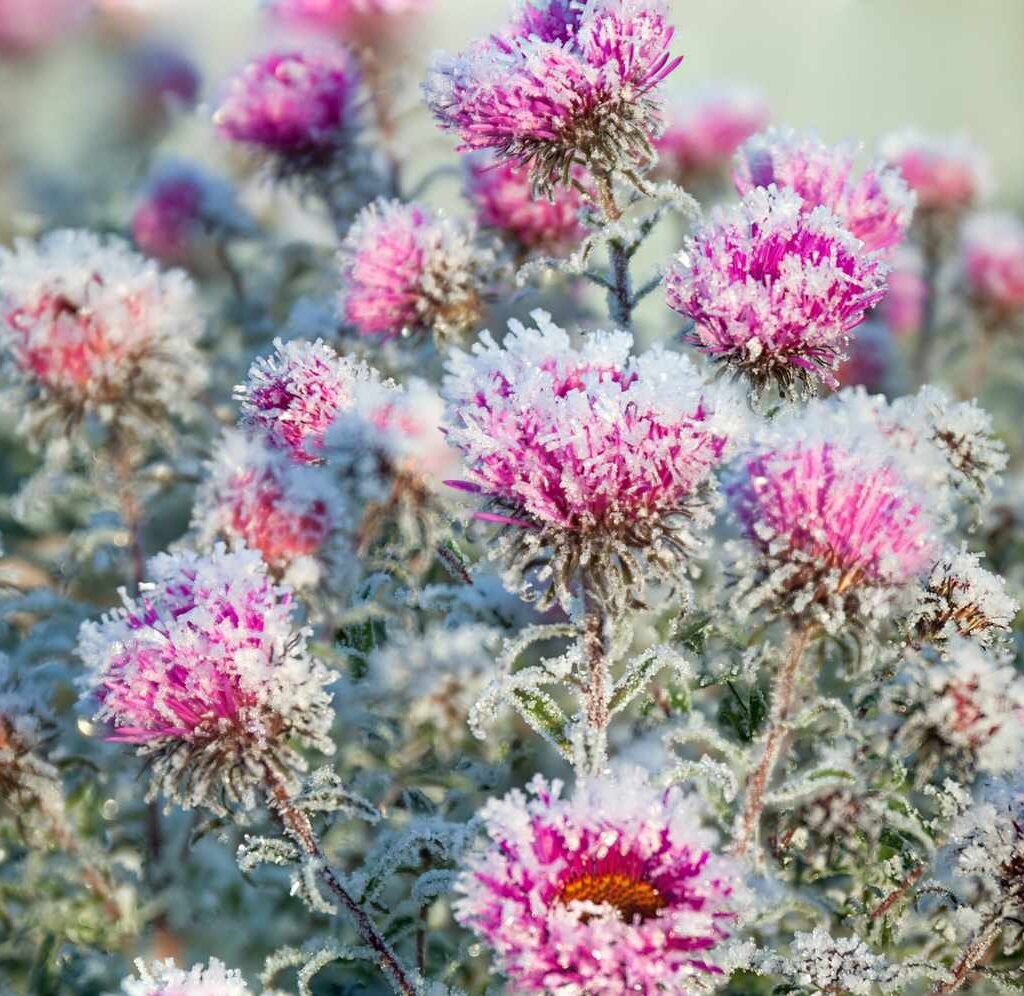
Succession planting is a technique that stages plantings throughout the growing season to maintain continuous blooms.
How to Implement
- Sow seeds or transplant seedlings every 2–3 weeks.
- Replace early-blooming annuals with late-season varieties in beds and containers.
- In container gardens, rotate plants between sun and shade to maximize bloom duration.
Tip: Succession planting is especially effective for fast-growing annuals like zinnias, marigolds, and petunias.
3. Deadhead and Prune Regularly
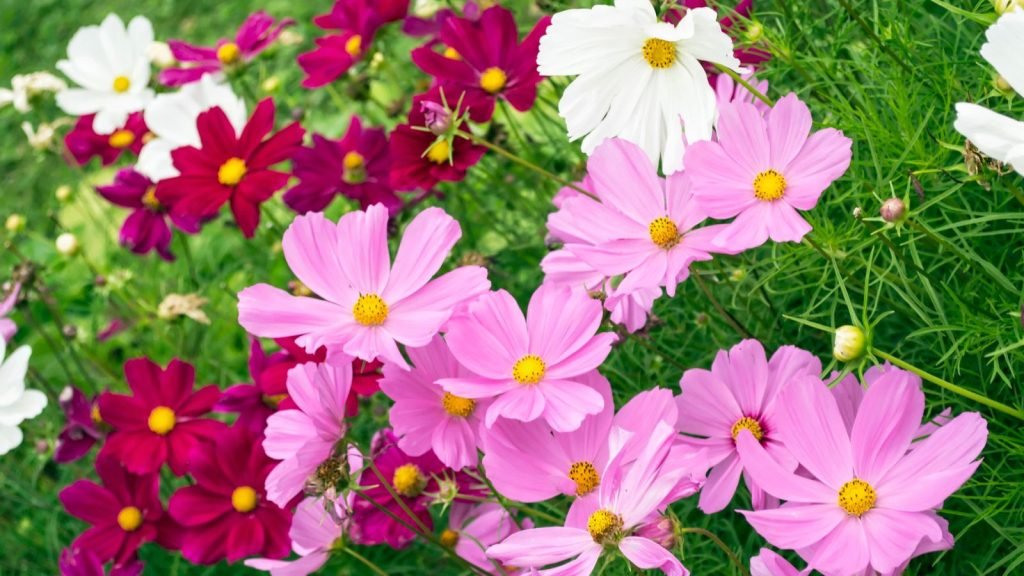
One of the simplest ways to extend flowering is through consistent deadheading and pruning.
Deadheading
- Remove spent flowers to redirect plant energy toward producing new blooms.
- For plants like petunias and zinnias, deadheading can double the flowering period.
Pruning
- Trim back leggy or overgrown stems to encourage bushier growth and more flowers.
- For perennials, remove faded blooms while leaving some seed heads for wildlife attraction.
Tip: A well-maintained garden bed not only looks neat but also maximizes flowering potential until frost.
4. Fertilize Strategically for Late-Season Blooms
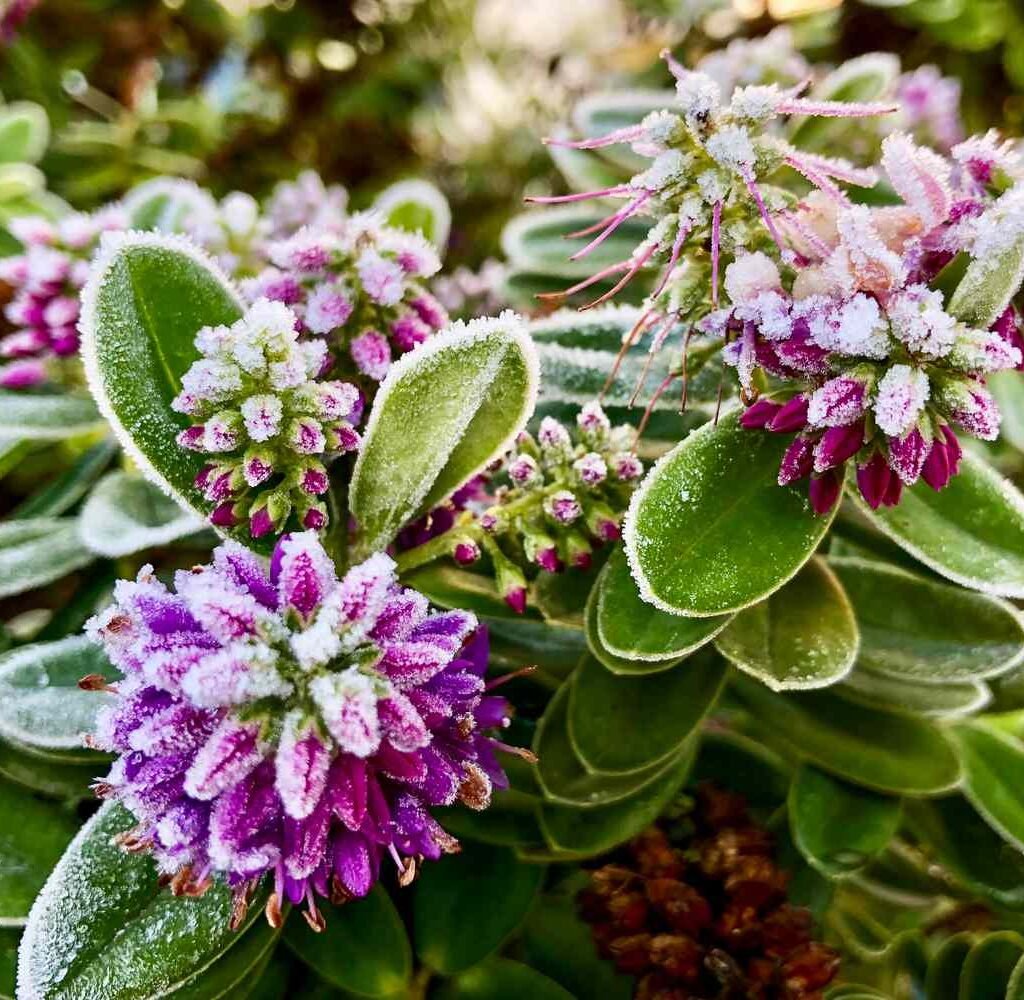
Proper nutrition is critical for flowers to remain vibrant as temperatures drop.
Fertilizer Tips
- Use a low-nitrogen, high-phosphorus fertilizer to promote blooms over leafy growth.
- For container gardens, apply liquid fertilizer every 2–3 weeks.
- Incorporate organic compost into garden beds to improve soil structure and long-term fertility.
Tip: Avoid over-fertilization with nitrogen in late summer, as it can encourage lush foliage at the expense of flowers.
5. Protect Plants From Early Frost
Even frost-tolerant plants can suffer when temperatures dip unexpectedly. Implementing protective measures can extend your garden’s life into late fall.
Frost Protection Techniques
- Cover Plants: Use lightweight fabrics, frost blankets, or old sheets over sensitive plants overnight.
- Water the Soil: Moist soil retains heat better than dry soil, protecting roots from frost damage.
- Move Containers Indoors: For potted flowers, bring plants inside or to a sheltered location during cold nights.
- Use Cloche or Cold Frames: These structures create a mini greenhouse effect, shielding plants from frost.
Tip: Remove protective coverings during the day to allow sunlight and air circulation, preventing mold and mildew.
6. Optimize Watering Practices
Watering habits significantly influence bloom longevity, especially as fall approaches.
Watering Tips
- Keep soil evenly moist, but avoid waterlogging, which can lead to root rot.
- Water in the morning to allow plants to dry before cooler evening temperatures.
- Mulch around plants to retain soil moisture and moderate soil temperature.
Tip: Well-hydrated plants are more resilient to temperature fluctuations and maintain longer-lasting blooms.
7. Mulch to Extend the Growing Season
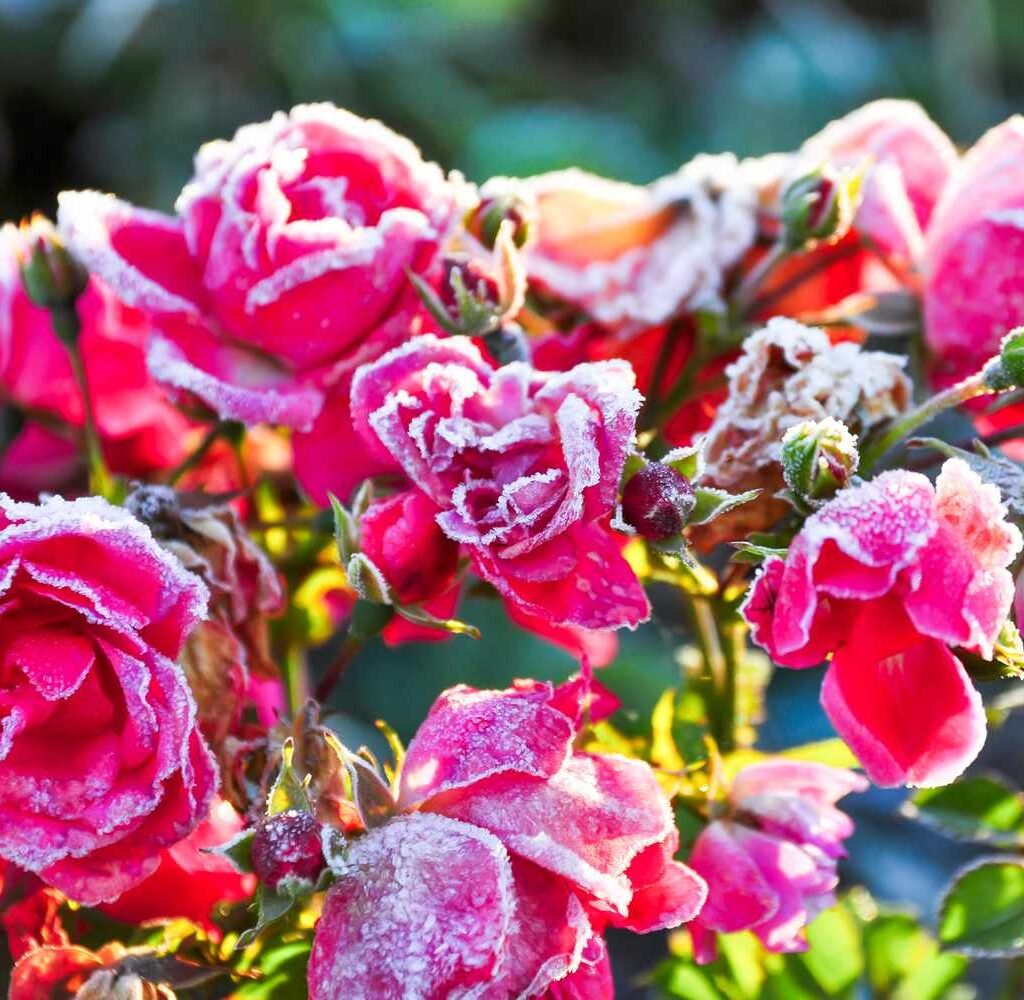
Mulching offers multiple benefits that help flowers thrive until the first frost:
- Temperature Regulation: Protects roots from sudden cold snaps.
- Moisture Retention: Reduces water loss during dry fall days.
- Weed Suppression: Minimizes competition for nutrients.
Recommended Mulches
- Straw or Hay: Effective insulator for beds and borders.
- Bark Chips or Wood Chips: Slow-decomposing, adds organic matter.
- Shredded Leaves: Free and nutrient-rich, especially for perennials.
Tip: Maintain a 2–4 inch mulch layer and keep it slightly away from stems to prevent rot.
8. Choose the Right Container and Bed Locations
The location of your garden can influence how long plants bloom in cooler weather.
- Sun Exposure: Even in fall, flowers require 6–8 hours of sunlight daily for photosynthesis.
- Sheltered Spots: Plant near walls or fences to protect from wind chill.
- Containers: Use larger pots, which retain heat longer than smaller ones, protecting roots.
Tip: Proper placement combined with frost protection strategies can add weeks to your garden’s flowering season.
9. Extend Blooms With Smart Companion Planting
Certain plant combinations can enhance bloom longevity:
- Pollinator-Friendly Plants: Encourage bees and butterflies, which help with flower reproduction.
- Heat-Resistant Varieties: Plant alongside flowers that thrive in lingering summer warmth to bridge seasonal changes.
- Herbs: Plants like thyme or sage repel pests naturally, reducing stress on flowers.
Tip: Companion planting not only extends flowering periods but also enhances garden biodiversity.
10. Monitor for Pests and Disease
As the growing season progresses, plants can become stressed by pests and diseases, which shortens bloom duration.
Key Practices
- Inspect leaves weekly for aphids, spider mites, and fungal infections.
- Use organic sprays or neem oil to manage pests without harming blooms.
- Remove infected or damaged foliage promptly.
Tip: A healthy, pest-free garden ensures continuous flowering and vibrant plant health until frost arrives.
11. Late-Season Fertilizer Boosts
For gardens approaching the first frost, a final fertilization boost can enhance late-season blooms:
- Use a phosphorus-rich fertilizer to stimulate root and flower development.
- Apply liquid fertilizer weekly to container plants.
- Incorporate slow-release granular fertilizers for garden beds to support the last round of flowers.
Tip: Fertilizing strategically in late summer or early fall ensures strong, colorful blooms that survive cooler temperatures.
Conclusion
Maintaining a garden full of color until the first frost is entirely achievable with thoughtful planning, proper care, and seasonal strategies. By selecting frost-tolerant and late-blooming plants, practicing succession planting, deadheading, fertilizing strategically, and protecting against frost, gardeners can extend the vibrant life of their flowers well into autumn.
Additional techniques, such as mulching, optimized watering, smart placement, companion planting, and pest management, ensure plants remain healthy, resilient, and visually stunning until the garden season naturally concludes.
With consistent attention and the use of these proven methods, your garden can become a show-stopping landscape that offers joy, color, and fragrance until the very first frost.
Tip: The secret to a long-blooming garden is a combination of plant selection, nutrition, and protection—when applied together, your garden can flourish even as temperatures dip.
